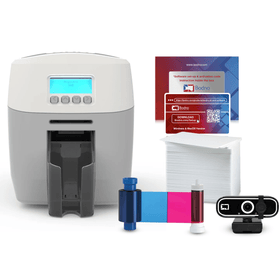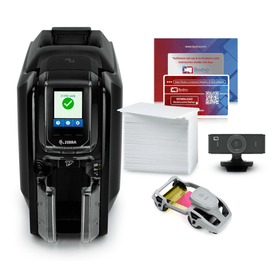When it comes to secure card printing, we all look for desirable traits like quality, reliability, and convenience. This applies to both the printing and the personalization of cards. To achieve these things, it is imperative to first familiarize oneself with the many different technologies that come into play when printing secure cards.
PVC Plastic Cards
Plastic cards carry a variety of applications, which is a major reason why they are such a huge part of modern living. These cards are portable and durable, and in standard size, can be used as driver’s licenses, payment cards, employee IDs, and membership cards, to name a few.
ID card printers allow customized printing that is both secure and cost-effective, and can be produced on demand. You can print cards in either color or monochrome, and encode them with additional features such as RFID magnetic stripes, which allows you to expand their use from merely secure IDs to even gift cards and such.
It is possible to print images on top of plastic cards using what is known as dye sublimation technology. The process makes use of three (YMC) panels for printing color, and a single (K) panel for printing black. It follows that the YMC portion takes care of the color picture, while the K part handles the black text. On top of that, an overlay panel is applied to protect both the color picture and the text from getting scratched out.
Monochrome Printing
This form of printing makes use of a single color. This could be white, black, red, blue, silver, gold, or any from a range of myriad other colors. The method highly cost-effective, and allows personalizing cards that have already been printed on. This works best for cards that require no color picture on them, where monochrome is used for printing barcodes.
Color Printing
For color printing, color ribbons are used. These come in three colors: cyan, yellow, and magenta. The plastic card gets passed through a heated print head, along with the color panels. The respective panels transfer their colors onto the cards using the heat drawn from the print head. Standard performance for such printing goes up to 300dpi, which is why the process allows putting out images and logos of excellent quality.
UV Security Panel
The UV panel is a highly advanced form of security panel where a fluorescence image is revealed under UV light exposure. This is very cost-effective, as well as an almost effortless way of preventing counterfeiting and fraud. Any trademark or logo can be designed on a card, without incurring extra cost. This solution is best suited to low-cost, low-volume, mid-range security ID issuance.
Encoding
This is a vital part of any modern ID card printer. ID cards are not simply for visually identifying a person, but also storing information. Secured data gets stored in them, to be later drawn out and used for a variety of purpose, including financial. Three main encoding methods exist: contact IC, magnetic stripe, and contactless IC.
Rewritable Printing
The rewritable process does not personalize cards using ribbons; instead, it activates a heat sensitive foil, which is already covering the card’s surface. This can be repeated multiple times, and each tie the card gets personalized to the extent you wish for. You normally see this done with bonus point cards, temporary visitor’s cards, etc. It is possible to rewrite up to 500 times on such cards, using anything from magnetic stripes to contactless IC.
Direct versus ReTransfer Printers
A Direct-To-Card printer essentially adheres the ribbon directly onto the PVC surface of the card. This ribbon already carries the person’s data and image on it. Here, the print head (and expensive component) is required to directly touch the PVC layer. This can easily cause issues in terms of quality, as a result of dirt, or unevenness on the PVC, either of which can damage the head.
When that happens, the printer head needs replacing. Direct-To-Card printers are also incapable of putting out the same level of card that ReTransfer badge printers can manage to, although they are by far the more popular card printer type on the market. Direct-To-Card printers cost less up-front, and can meet the ID card needs of a majority of industries.
ReTransfer printers, also called HDP (High Definition Printer), Reverse Transfer printers, or Over-The-Edge printers, can print at once over the card’s entire surface. The ribbon is adhered to an extra film that is in turn stuck to the PVC. This removes the need for the printer head to directly touch the card, which as a consequence carries a lifetime warranty, a more appealing look, and the option to add more modules as and when required.
These ID card printers are suited to ID card needs that include high-volume and high quality, and find wide use in airports, government agencies, and universities. Evolis printers such as the Avansia fall under the ReTransfer type.













 Software
Software Upgrades
Upgrades Support Plans
Support Plans Self Serve
Self Serve Printer Setup
Printer Setup


